30-Minute Yoga Routine For A Healthy You
Soothe your mind and relax your body, starting with balasana and ending with savasana.
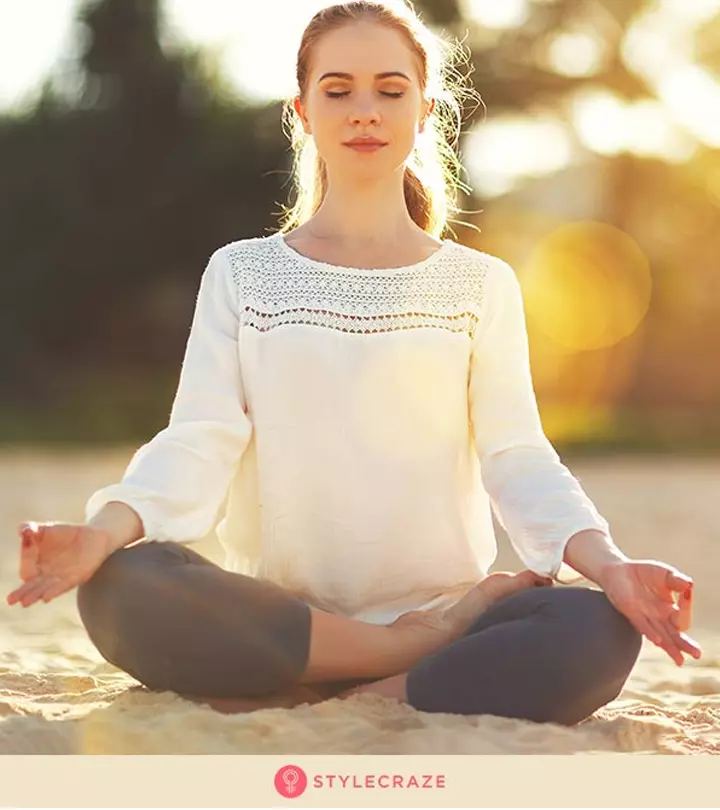
Image: Shutterstock
In this fast-paced modern world, many people hardly find time to focus on their fitness and mental well-being. Here is a solution for such folks! A 30-minute yoga routine for peace, tranquility, and strength. Yes, you heard it right! Thirty minutes is all you need. This routine not only boosts physical fitness but also strengthens the mind-body connection, helping relieve stress and encouraging emotional balance.

A cross-sectional survey from UK-based Yoga institutions studied the motivation and perceptions of 2434 yoga practitioners. The initial reasons cited for taking up yoga were different, such as general wellness (39%), flexibility (8.5%), fitness (19%), and so on. However, 47% of participants reported a change in motivation, the most common of them being spirituality (21%) and stress management (18%). They strongly perceive yoga’s benefits to be improved physical health (88%), mental health (86.2%), strength (87.1%), flexibility (91.6%), and adequate sleep (57.4%).
Matt D’Avella, a YouTuber, shared his transformative journey of a 30-day challenge of practicing yoga. He discovered the joy, fun, and surprising benefits of yoga, and concluded the 30-day experiment, saying, “It’s really really great. I think it’s fun; it’s challenging; it’s something that, you know, obviously, I’m no yogi master…, I feel like I’m learning and I am improving each day. I’m getting more flexible. It’s kind of like a spiritual practice for a lot of people… I’m excited to see how much I can grow just by putting in a little bit of time each day into yoga (i).”
Wondering if that is enough to cover all yoga postures?
Well, we have got you covered. In this article, we will take you through a custom yoga sequence that works on different parts of the body to help you stay fit.
So, let us hit the yoga mat and get started!
In This Article
Preparation For 30-Minute Yoga Routine
If you plan to practice in the morning, make sure your stomach is clean and your bowels empty before you begin the practice. Moreover, there are some more things to do before yoga, which ensures you reap the full benefits of your session. In the evening, practice after a gap of 4 to 6 hours from your last meal.
Wear light, loose, and comfortable clothing. Tie your hair up neatly and pin up any hair strands that fall on your face. Take a yoga mat and spread it out in a space where there is good air circulation and natural light. Keep a water bottle and a timer nearby to hydrate you and keep track of time. In addition, consider using essential oils, lighting candles, or dimming the lights to create a calm environment that improves your yoga practice.
 Quick Tip
Quick TipThat’s it. That’s all you have to do. Now, let’s get to the 30-minute yoga workout for relaxation, mindfulness, and improved strength and endurance.
Key Takeaways
- Ensure your stomach is clean and bowels empty before starting a 30-minute yoga session in the morning.
- Leave a gap of 4-5 hours, after a meal, in the evening before the session.
- The 30-minute yoga sequence consists of balasana, sukhasana, adho mukha svanasana, tadasana, virabhadrasana II, trikonasana, setu bandhasana, and savasana.
- These poses offer many benefits for your overall health apart from easing tendon pain and improving flexibility.
30-Minute Yoga Sequence
The following sequence is simple and balanced. Try it.
- Balasana (Child Pose)
- Sukhasana (Easy Pose)
- Adho Mukha Svanasana (Downward-Facing Dog Pose)
- Tadasana (Mountain Pose)
- Virabhadrasana II (Warrior II Pose)
- Trikonasana (Triangle Pose)
- Setu Bandhasana (Bridge Pose)
- Savasana (Corpse Pose)
- Kumbhakasana (Plank Pose)
1. Balasana (Child Pose)
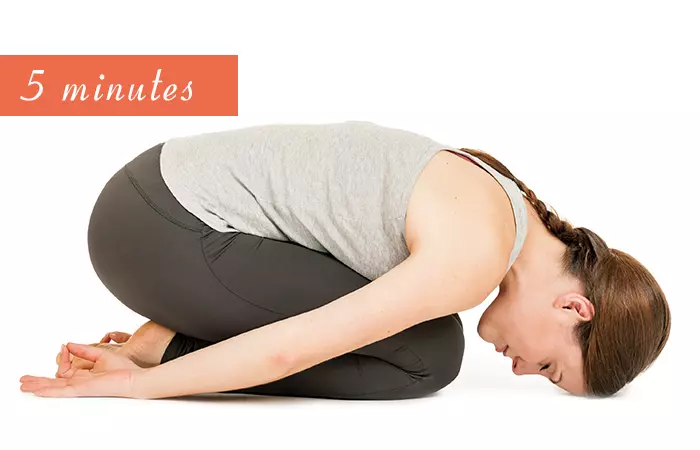
About The Pose: Balasana or the Child Pose looks like the fetal position of a baby. It is a resting pose that requires you to sit in Vajrasana and bend forward. Balasana is a beginner level Vinyasa yoga asana and one of the basic yoga asanas for beginners. Repetition of the asana is not necessary.
Benefits: Balasana releases tension in the back and shoulders and gets rid of dizziness and fatigue. The pose reduces stress and flexes the internal organs. It gently stretches the hips and thighs. Balasana encourages steady breathing and blood flow throughout the body.
Time Taken: Stay in Balasana for 5 minutes.
 Quick Tip
Quick TipTo know more about the pose and how to do it, click here: Balasana
2. Sukhasana (Easy Pose)
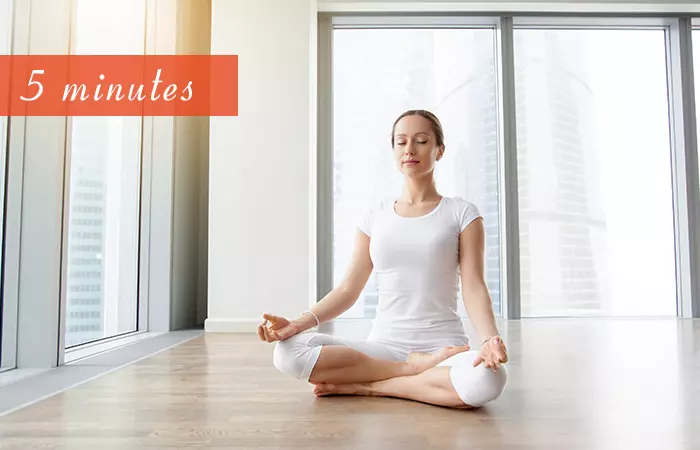
About The Pose: Sukhasana or the Easy Pose is a seated asana that is a highly popular asana to practice meditation in. The Sanskrit word ‘sukha’ means comfortable, and Sukhasana is one pose that is easily doable. The pose is a beginner level Vinyasa yoga asana.
Benefits: Sukhasana lengthens your spine and calms your mind. It relieves mental tiredness and improves body posture. The pose also unlocks the hips and massages your calf muscles. It makes you energetic, increases your productivity, and creates an active state of mind.
Time Taken: Stay in Sukhasana for 5 minutes.
3. Adho Mukha Svanasana (Downward Facing Dog Pose)
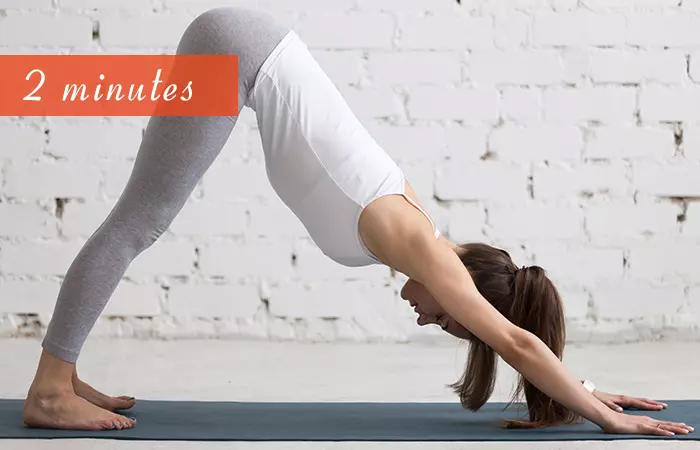
About The Pose: Adho Mukha Svanasana or the Downward Facing Dog Pose is an inversion that looks like a dog bending forward. It is easy to do and has many benefits. The pose is a beginner level Ashtanga yoga asana.
Benefits: Adho Mukha Svanasana strengthens your chest muscles, arms, legs, shoulders, and feet. It increases your lung capacity and keeps headache and insomnia at bay. The pose is therapeutic for asthma.
Time Taken: Hold the pose for 2 minutes.
To know more about the pose and how to do it, click here: Adho Mukha Svanasana
4. Tadasana (Mountain Pose)

About The Pose: Tadasana or the Mountain Pose is the base of all poses. It is a standing pose, and all other standing poses are a variation of the Tadasana. It is one of the first poses you learn in yoga. Tadasana is a beginner level Hatha yoga asana.
Benefits: Tadasana increases your power and strengthens your knees. It enhances the mobility in your legs and hips and firms your abdomen and buttocks. It increases the flexibility of your spine, decreases pains throughout the body, and makes you enthusiastic.
Time Taken: Hold the pose for 12 seconds and repeat it 10 times, making the time spent on Tadasana 2 minutes.
To know more about the pose and how to do it, click here: Tadasana
5. Virabhadrasana II (Warrior II Pose)
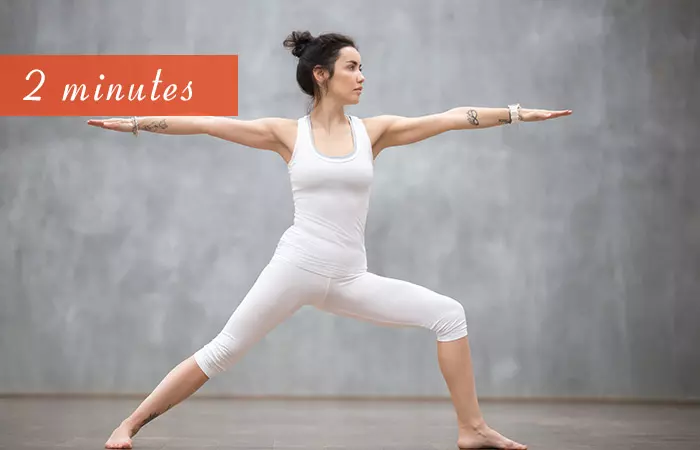
About The Pose: Virabhadrasana II or the Warrior II Pose is named after the warrior Virabhadra, who was created by Lord Shiva from a lock of his hair. The pose is highly efficient and lives up to whom it was named after. The Warrior II Pose is a beginner level Vinyasa yoga asana.
Benefits: Virabhadrasana II increases your stamina and stimulates your abdominal organs. It is therapeutic for infertility and sciaticai Nerve pain that results from a sciatic nerve injury or irritation that originates in the buttock/gluteal region. . The pose energizes tired limbs and develops stability. It also improves your respiration and confidence. The pose relieves backache and strengthens your muscles.
Time Taken: Hold the pose for 30 seconds on each leg and repeat it once for the same duration on each leg. That makes time spent on the asana 2 minutes.
6. Trikonasana (Triangle Pose)
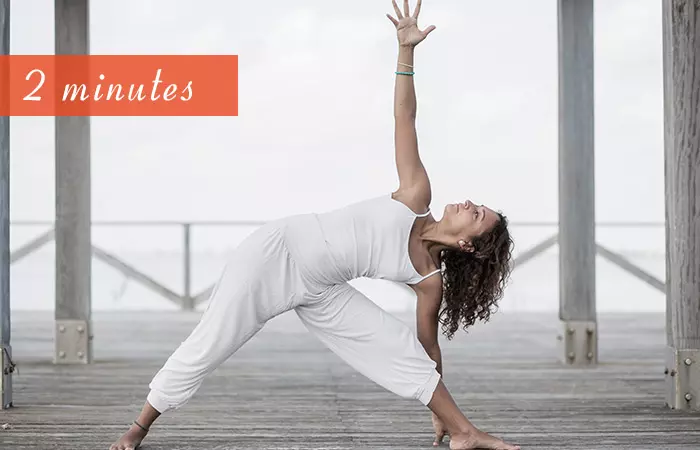
About The Pose: Trikonasana or the Triangle Pose is an asana that looks like a triangle, and is hence named so. The Sanskrit word ‘trikona’ means triangle. In Trikonasana, you should keep your eyes open, which is usually not the case with many other asanas. The pose is a beginner level Vinyasa yoga asana.
Benefits: Trikonasana cures indigestion and stimulates your kidneys. It eliminates fat from your waist and thighs and keeps the mobility of your hip joints intact. The pose is good for stress management. Trikonasana improves your mental and physical equilibrium.
Time Taken: Hold the pose for 30 seconds on each leg and repeat the same once. That makes it 2 minutes.
7. Setu Bandhasana (Bridge Pose)
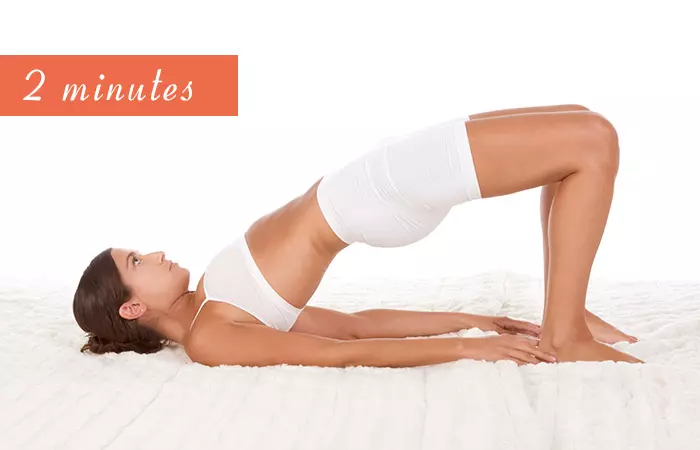
About The Pose: Setu Bandhasana or the Bridge Pose is an asana that looks like a bridge when assumed. The Sanskrit word ‘setu’ means bridge. The pose is an abdomen lift that works well for your body. Setu Bandhasana is a beginner level Vinyasa yoga asana.
Benefits: Setu Bandhasana calms your central nervous system and stimulates your lungs and thyroid glands. The pose is therapeutic for hypertensioni A condition characterized by blood pressure levels that are higher than normal due to unhealthy lifestyle choices. and sinusitisi An infection of the sinus lining near the nose that typically occurs following a cold or an allergy attack. . It strengthens your back and hamstrings. The pose also stretches your neck and stimulates the hair follicles.
Time Taken: Hold the pose for 60 seconds and repeat it once. That makes it 2 minutes.
To know more about the pose and how to do it, click here: Setu Bandhasana
8. Savasana (Corpse Pose)
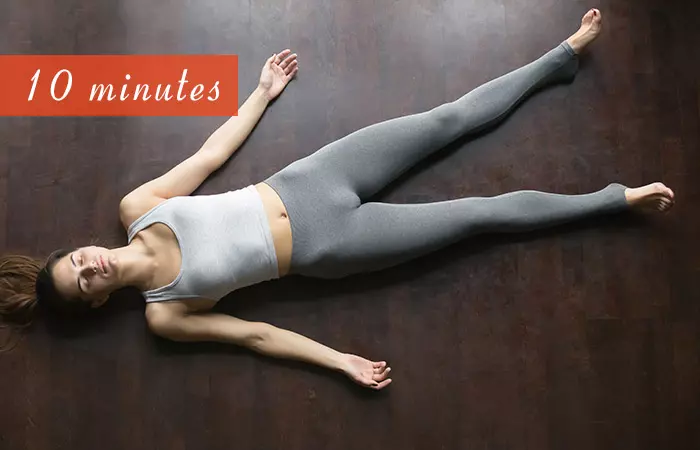
About The Pose: Savasana or the Corpse Pose is named so as it resembles a corpse with absolutely no movement. Savasana is a restorative pose that requires you to lie down relaxed, making it one of the best yoga poses for relaxation. It is generally practiced at the end of a yoga session. Savasana is a beginner level Ashtanga yoga asana.
Benefits: Savasana relaxes your muscles and calms your mind. It releases stress, fatigue, and tension. The pose cures insomnia and improves your mental health. It is good for those suffering from neurological problems and diabetes. The pose gives you deep rest and enables your yoga workout to sink in well.
Time Taken: Relax in the pose for 10 minutes.
To know more about the pose and how to do it, click here: Savasana
9. Plank Pose
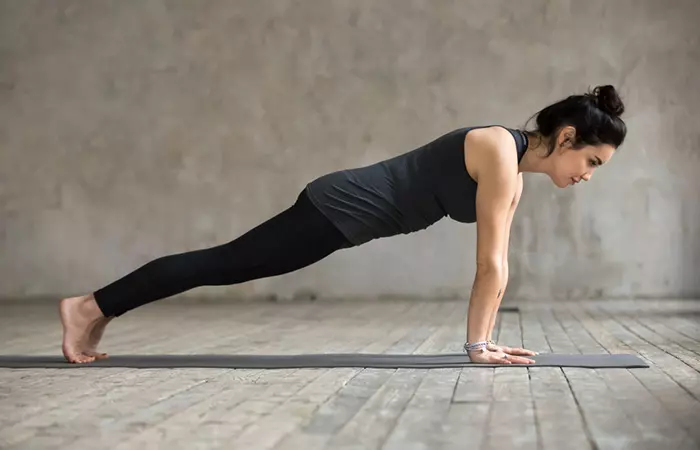
About The Pose: The Plank Pose, known as Kumbhakasana, is a fundamental yoga asana that resembles a push-up. It is relatively simple to perform and is often categorized as a beginner-level yoga posture.
Benefits: This pose offers many benefits for practitioners. It effectively strengthens the muscles in the chest, arms, legs, shoulders, and feet, improving overall muscle tone and endurance. It also enhances lung capacity and may prevent headaches and insomnia. Additionally, the plank pose has therapeutic qualities, particularly for individuals dealing with asthma. Regular practice of this pose may lead to increased physical strength and better respiratory health.
Time Taken: Hold the plank pose for 60 seconds and, for a more challenging variation, aim to increase the duration gradually over time.
Now that you have explored the sequence, let us look at the key benefits a 30-minute yoga routine can bring to your body and mind in the following section.
Benefits Of A 30-Minute Yoga Routine
Regular 30-minute yoga sessions provide several mental and physical benefits that can improve your overall health and help you find balance in your daily life. Here is a brief overview of the benefits:
- Improves flexibility and muscle movement.
- Reduces stress and enhances calm.
- Boosts focus and mental clarity.
- Strengthens posture and core.
- Increases energy and vitality.
Your 30-minute yoga workout is done and dusted. Now, let’s answer some common queries on yoga.
A 30-minute yoga routine is all you need to not compromise your physical and mental health in this fast-paced and ever-busy modern world. The above-listed yoga sequence starts with the child pose (balasana) and ends with the corpse pose (savasana), and you must spend two to five minutes on each pose. The benefits of yoga include enhancing breathing, improving blood circulation, easing stress, lengthening the spine, calming your mind, providing energy, strengthening arms, legs, and shoulders, improving body posture and balance, etc. So, give yourself 30 minutes every day to stay fit and healthy and increase your productivity.
Frequently Asked Questions
What are the different styles of yoga, and how do they benefit practitioners?
Yoga comes in a variety of forms, such as Hatha, Vinyasa, and Ashtanga. Each form is suitable for a specific level of fitness and objective, ranging from increasing strength and flexibility to promoting calmness and mental clarity. Whether you seek a challenging workout, deep relaxation, or spiritual growth, there is a yoga style that can benefit both your body and mind.
How often do I practice the 30-minute yoga routine?
Practice it every day, preferably in the morning.
Is yoga a religion?
No, it is not. Yoga is a philosophy and a spiritual health and wellness practice.
Can yoga change your body shape?
Possibly. Practicing yoga every day helps build flexibility and tone muscle. It also can potentially increase fat loss, leading to a leaner body.
Is yoga better than a workout?
One study refers to yoga as being as effective as the strength training exercises recommended by the Center for Disease Control (CDC) (1). However, yoga may not be sufficient for whole-body strength training
Is yoga better than stretching?
Yes, yoga is better than stretching (1). Lily Allen-Dueñas, certified yoga instructor, says, “Yoga is better than stretching if you are looking to do more than just the act of stretching itself. While yoga may appear to be similar to stretching, the whole purpose of yoga is the breath— connecting the mind and body through the breath. If you are breathing, you are practicing yoga. Movement is secondary.”
How many calories do you burn doing 30 minutes of yoga?
You may burn anywhere between 180 and 230 calories with 30 minutes of yoga.
Is yoga better than swimming?
Lalitha Bhowani-Mcsorley, a physiotherapist, says, “There is no definitive answer to this question, as the benefits of yoga and swimming may vary depending on the person. However, both yoga and swimming are excellent forms of exercise that can help improve overall fitness and well-being. Yoga may be better than swimming for some people, as it can provide a greater range of motion and flexibility. However, swimming is a great form of exercise for cardiovascular health and can also be relaxing. Ultimately, the best exercise for someone depends on their individual needs and preferences.”
Illustration: Minute Yoga Routine For A Healthy You
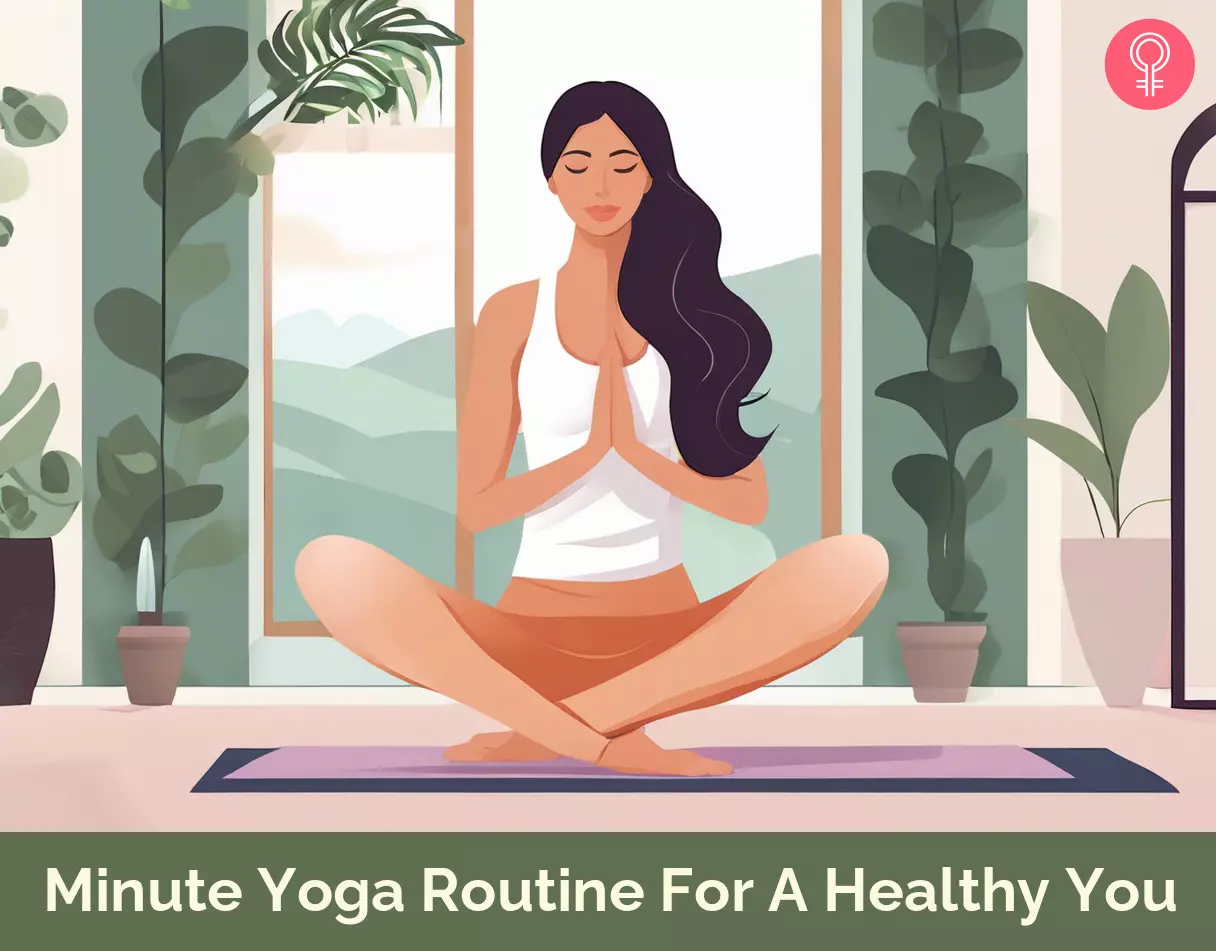
Image: Stable Diffusion/StyleCraze Design Team
Watch this 30-minute yoga workout video and follow along to awaken your body, improve flexibility, and embrace a sense of well-being.
Personal Experience: Source
StyleCraze's articles are interwoven with authentic personal narratives that provide depth and resonance to our content. Below are the sources of the personal accounts referenced in this article.
i. I tried yoga every day for 30 days.https://www.youtube.com/watch?v=jvUej9iVQyQ
References
Articles on StyleCraze are backed by verified information from peer-reviewed and academic research papers, reputed organizations, research institutions, and medical associations to ensure accuracy and relevance. Read our editorial policy to learn more.
- Yoga Is as Good as Stretching–Strengthening Exercises in Improving Functional Fitness Outcomes: Results From a Randomized Controlled Trial
https://www.ncbi.nlm.nih.gov/pmc/articles/PMC5864160/
Read full bio of Tatiana Sokolova
Read full bio of Shirin Mehdi
Read full bio of Arshiya Syeda
Read full bio of Moksha Gandhi






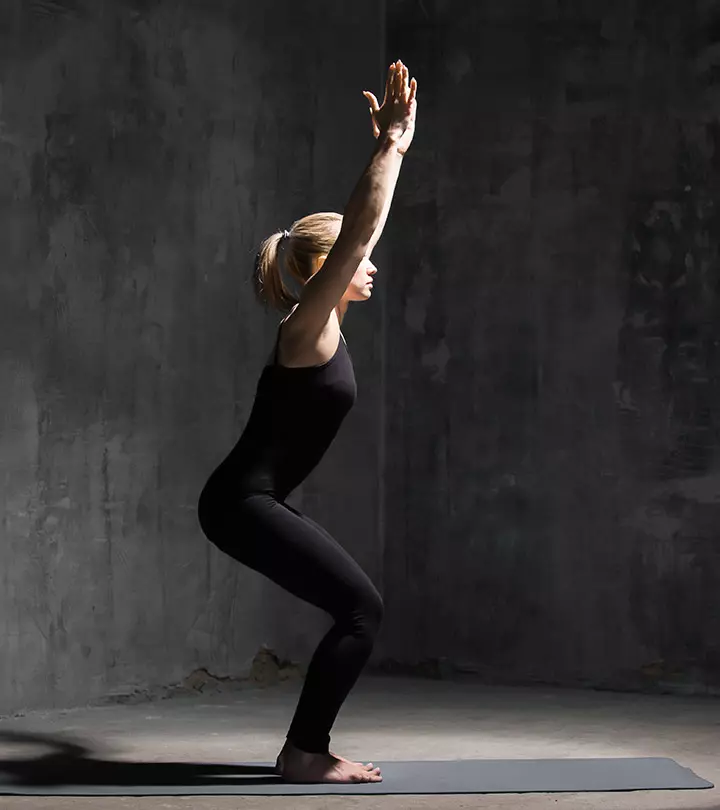

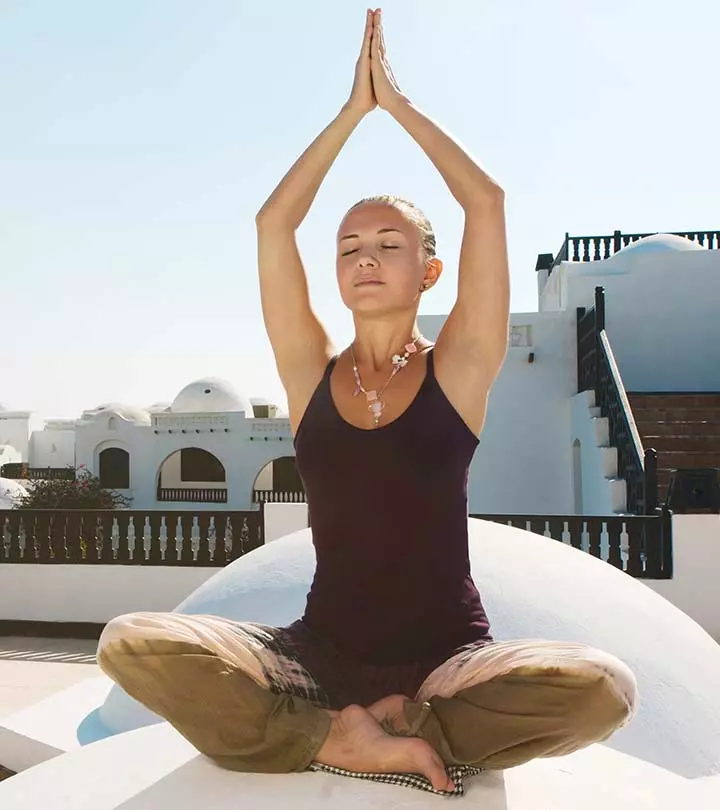
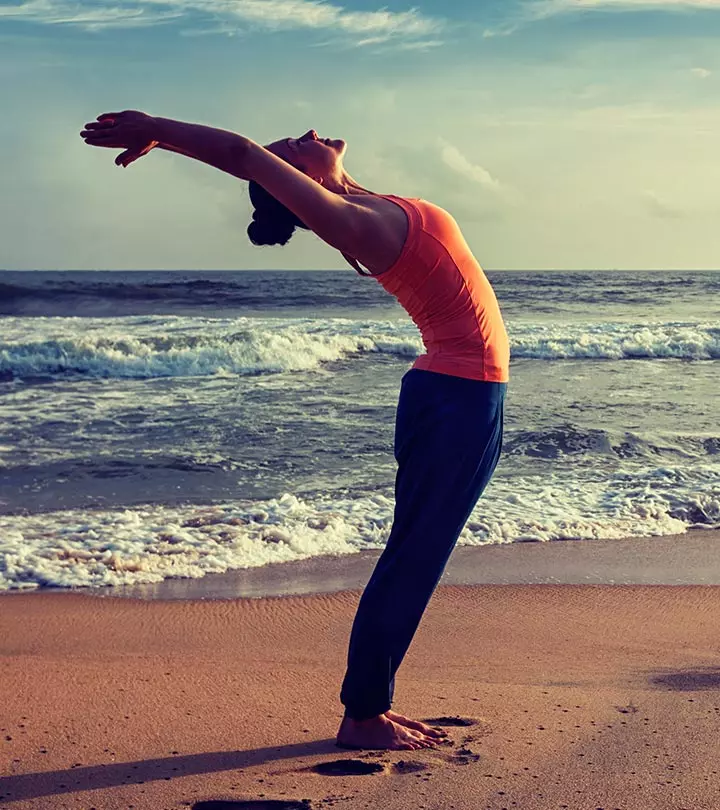
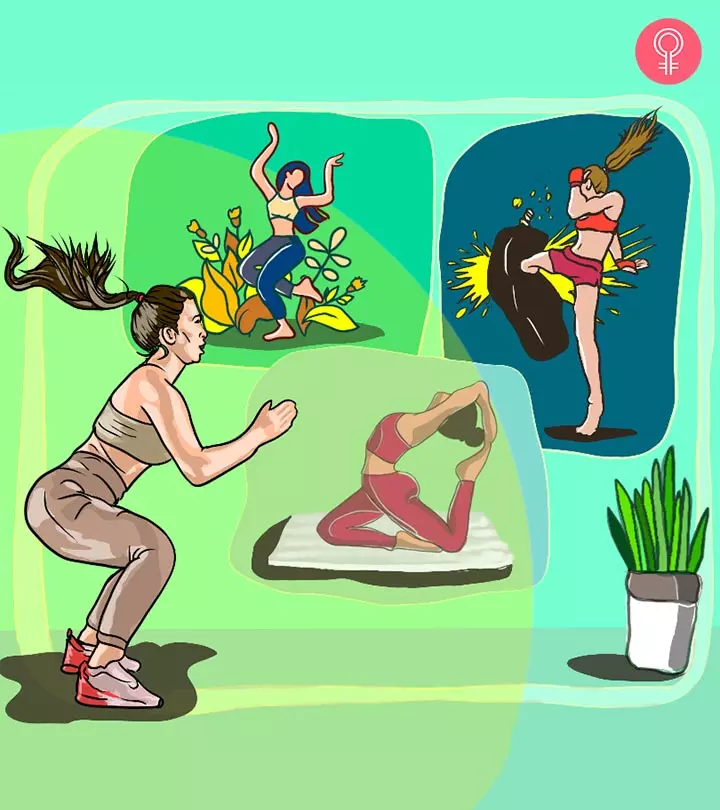
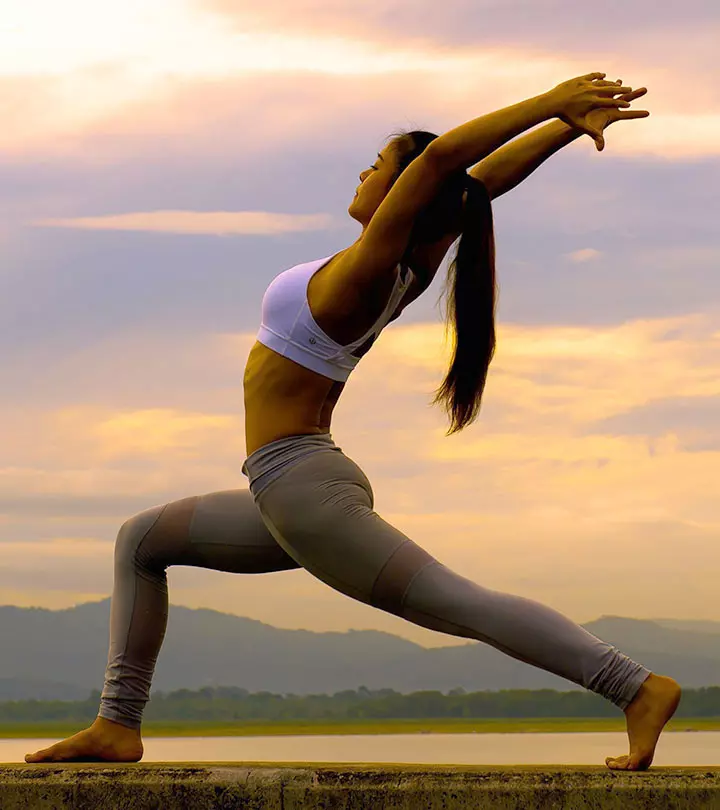
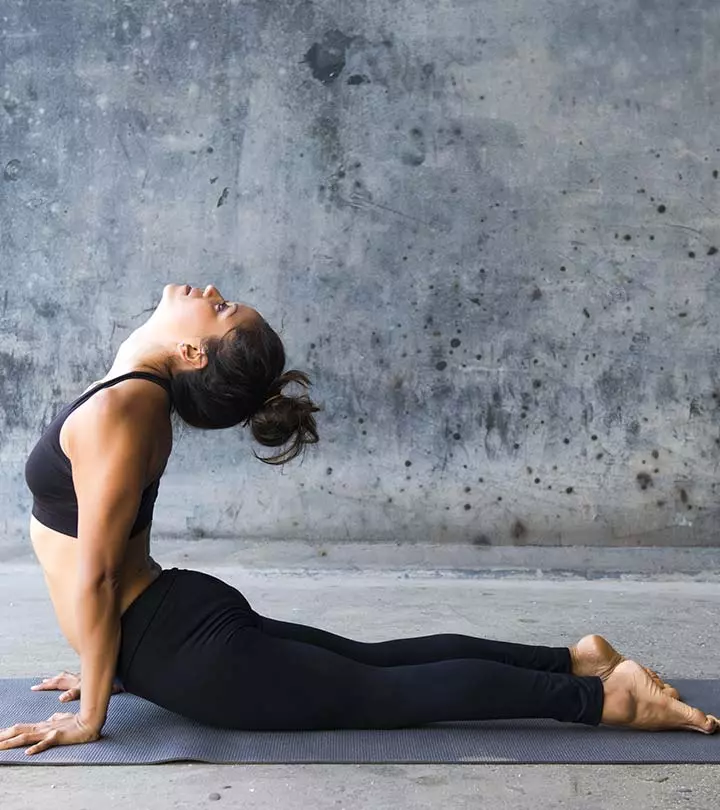
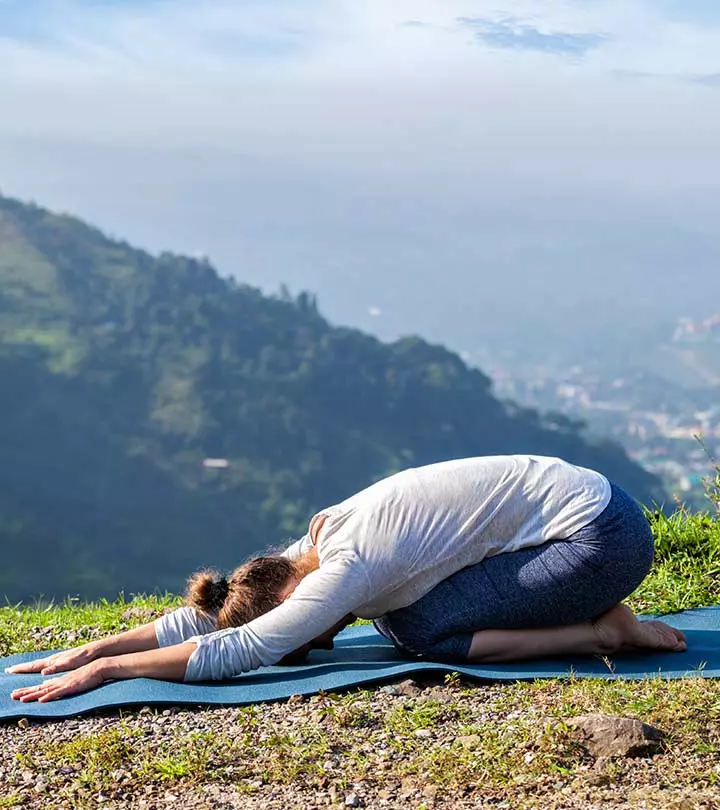
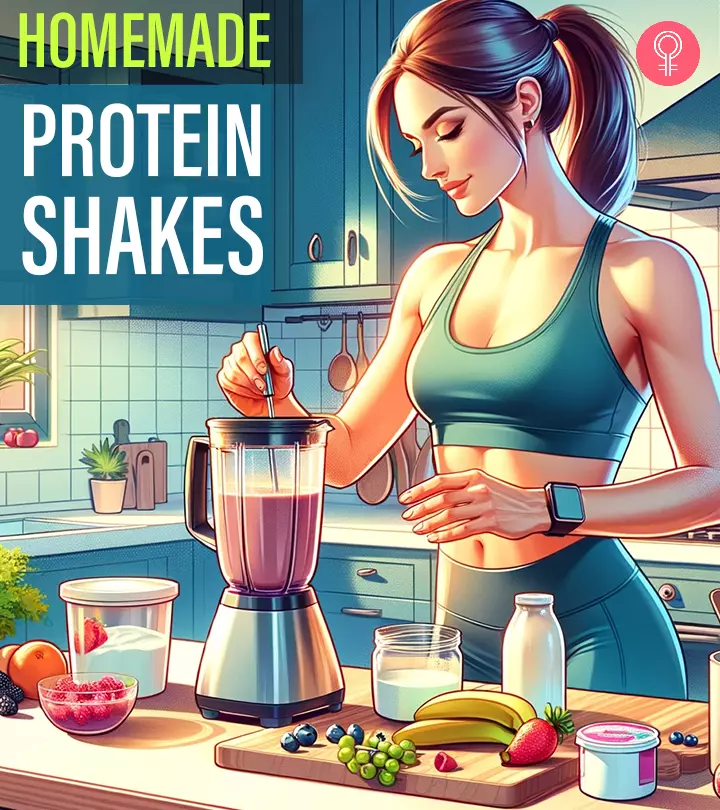


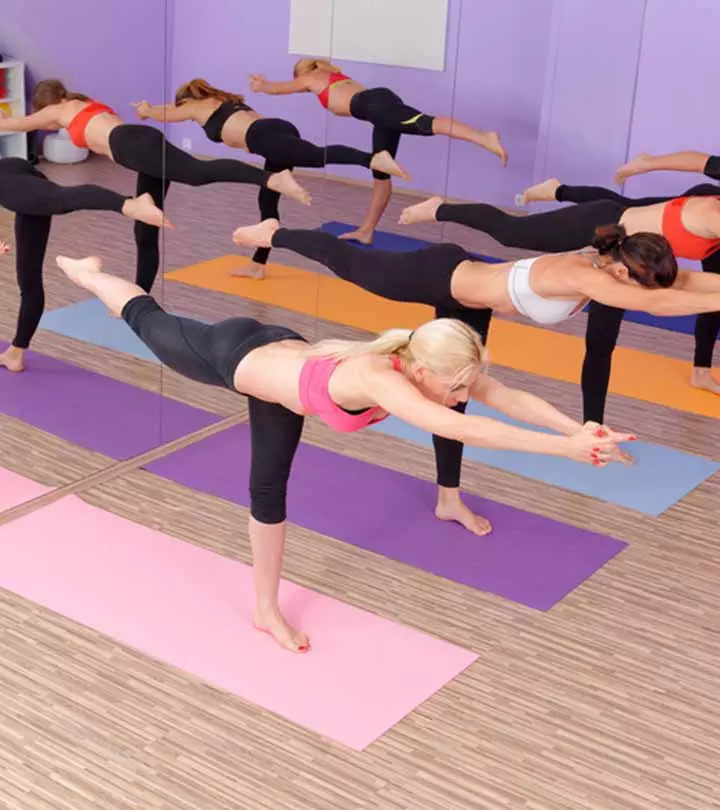



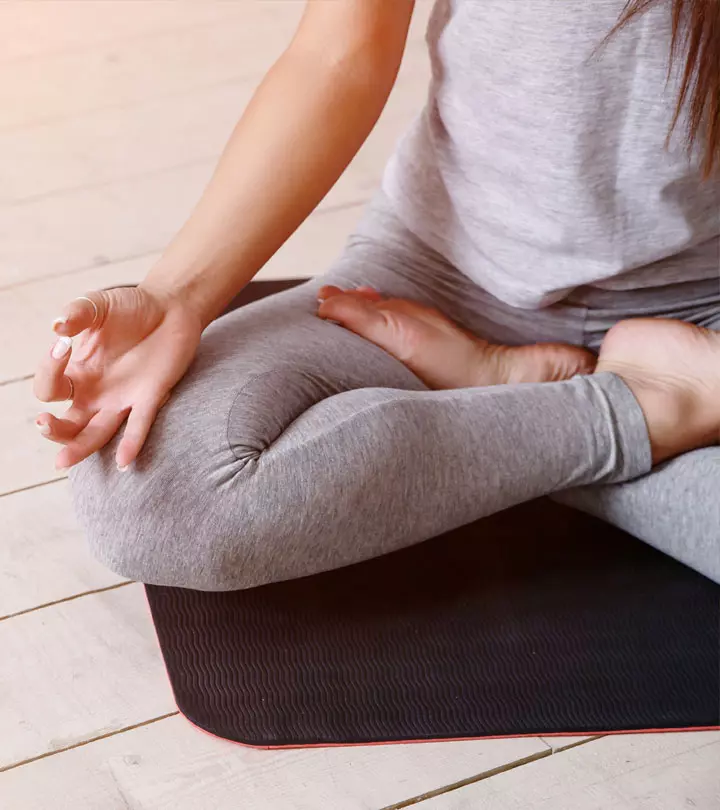
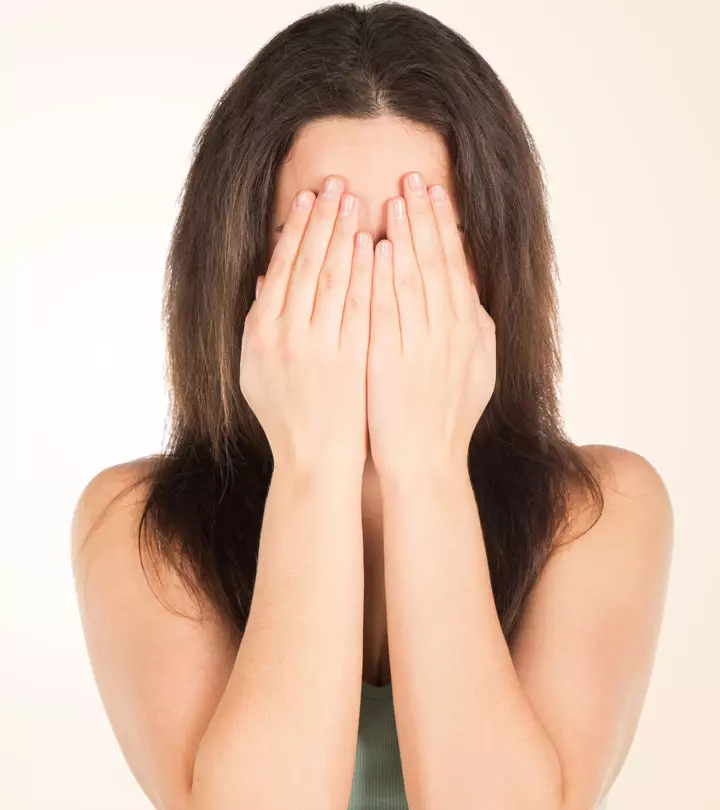
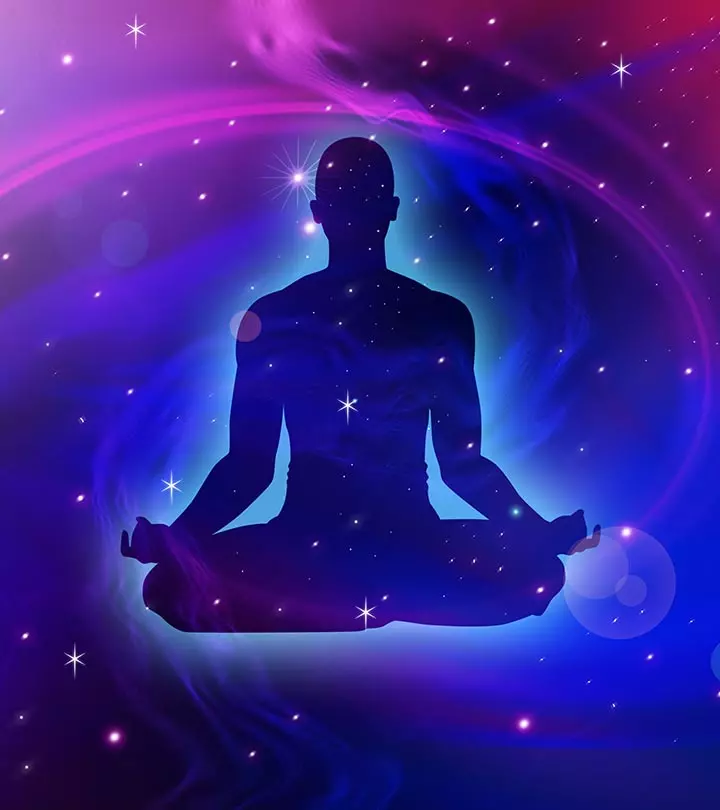
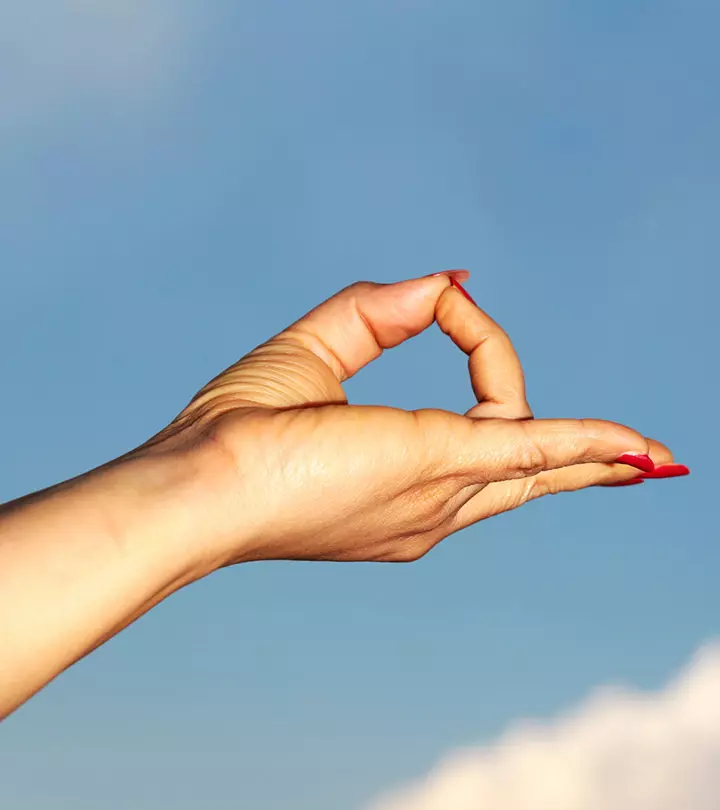

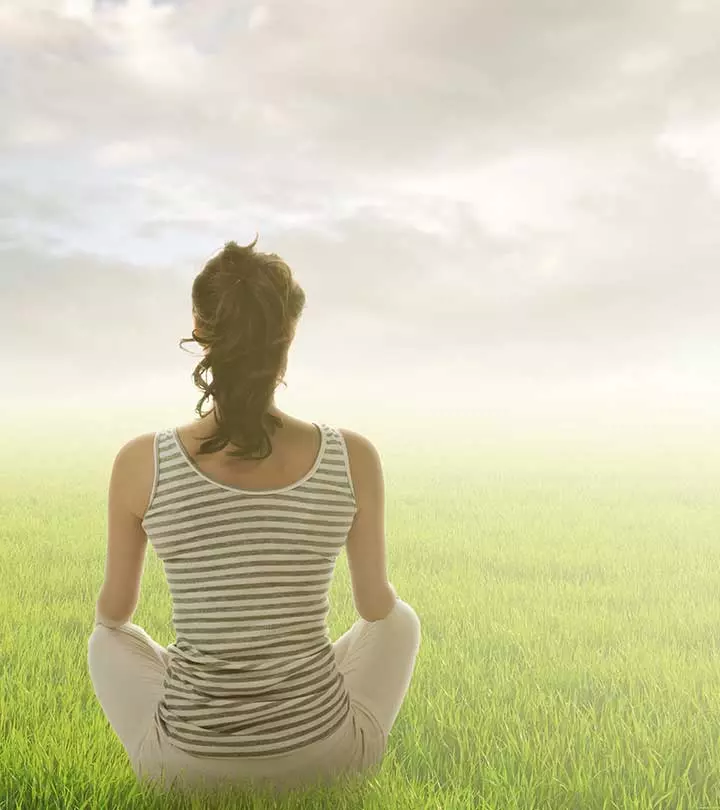
Community Experiences
Join the conversation and become a part of our empowering community! Share your stories, experiences, and insights to connect with other beauty, lifestyle, and health enthusiasts.